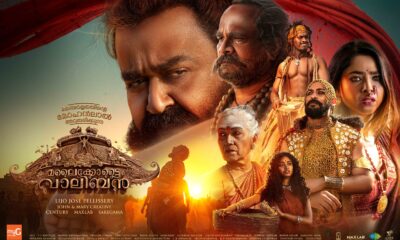Culture
Bharat Ratna for Karpoori Thakur: A Tribute to Bihar’s Backward Class Champion

The Narendra Modi-led BJP Government has posthumously conferred Bharat Ratna to the eminent socialist figure and former Chief Minister of Bihar, Karpoori Thakur, renowned for his advocacy for the Backward Classes in India. The declaration preceded the centenary celebrations of Thakur, also known as Jan Nayak (people’s leader), scheduled for the next day.
A two-time former Chief Minister of Bihar, Thakur played a crucial role in mentoring current-generation leaders in the state, including Chief Minister Nitish Kumar and RJD President Lalu Prasad Yadav. The decision by the BJP-led Modi government to honor Thakur, a towering figure among backward caste leaders in Bihar, with the highest civilian award, comes at a time when the opposition is rallying around the demand for a caste census as a pivotal issue in the upcoming Lok Sabha polls.
Who is Karpoori Thakur?
Karpoori Thakur, originally from Pitaunjhia village (now Karpoori Gram) in the Samastipur district of Bihar, actively participated in the Quit India Movement as a student activist and spent 28 months in jail during the freedom struggle. A member of the All India Students Federation, he entered politics in 1952, securing a seat as an MLA from Tajpur constituency as a Socialist party candidate.
Thakur’s political journey included serving as the Education Minister and Deputy Chief Minister of Bihar. In 1970, he became the first non-Congress socialist Chief Minister of Bihar, but his government collapsed after six months. He regained the CM post in 1977, only to resign in 1979 due to internal conflicts within the Janata Party, a coalition of various parties, including Socialists, regarding the reservation system.
Banned Liquor
Known for his social and political initiatives, Thakur enforced total prohibition of alcohol in Bihar, eliminated English as a compulsory subject for matriculation examinations, and facilitated the establishment of schools and colleges in backward districts. Notably, his implementation of the Mungeri Lal Commission report in 1978 reclassified backward classes as extremely backward classes, leading to 26% reservation in government services for them, a precursor to the later Mandal Commission report.
Karpoori Thakur Formula
The Karpoori Thakur Formula proposed 12% reservation for OBCs, 8% for EBCs, 3% for women, and 3% for the poor from upper castes. However, this reservation policy caused internal tensions within the Janata Party and faced opposition from upper castes. Thakur’s legacy continued even after his death in 1988, influencing the rise of regional parties like Janata Dal (United) and Rashtriya Janata Dal in Bihar.
In 2023, the coalition government of JD(U) and RJD released the findings of a caste survey, the first since 1931, revealing that EBCs classified using the Karpoori Formula constituted the largest section of the state’s population. The issue of caste census has become a focal point for opposition parties leading up to the Lok Sabha elections.
Culture
ISRO Unveils Spectacular Satellite View of Ayodhya’s Ram Temple

Well ahead of the grand consecration ceremony in Ayodhya, the Indian Space Research Organisation (ISRO) has unveiled the first glimpse of the majestic Ram Temple captured by indigenous satellites. The 2.7-acre site of the Ram Temple is clearly visible, with an enlarged view provided through the Indian Remote Sensing series of satellites. The satellite images, taken on December 16 last year, depict the under-construction temple amid the challenging conditions of dense fog over Ayodhya, hindering a clear view.
The imagery showcases Dashrath Mahal and the Sarayu River, along with the newly renovated Ayodhya railway station. India, boasting over 50 satellites in space, has leveraged its technology, including high-resolution satellites with capabilities of less than a meter, for this endeavor. Processed by the National Remote Sensing Centre in Hyderabad, a division of ISRO, the images provide a unique perspective on the ongoing construction.

ISRO’s technological contributions extend beyond satellite imaging, playing a crucial role in various stages of the temple’s development. One significant challenge involved determining the precise location for placing the idol of Lord Ram. The trust overseeing the construction sought to position the idol in a specific 3 feet by 6 feet space believed to be the birthplace of Lord Ram.
Alok Sharma, International Working President of Vishwa Hindu Parishad, revealed that after the demolition of the Babri Masjid in 1992, 40 feet of debris covered the sacred spot. Clearing this debris and securing the exact location proved to be a daunting task, considering the temple construction commenced almost three decades after the demolition. Here, space technology emerged as a crucial ally.

To pinpoint the exact spot, contractors from Larsen & Toubro, the construction firm, employed the sophisticated Differential Global Positioning System (GPS). The precise coordinates, accurate to 1-3 centimeters, served as the foundation for placing the statue in the temple’s sanctum sanctorum.
The advanced geographical instruments utilized for this purpose integrated precise location signals from India’s indigenous ‘swadeshi GPS’ – the ISRO-developed ‘Navigation with Indian Constellation’ (NavIC) satellite constellation. ISRO Chairman S. Somanath highlighted that five satellites of the NavIC constellation are currently operational, with plans for an upgrade in the system.
Uncategorized
Significance of Antarctica Day

Antarctica Day is an international holiday that commemorates the signing of the Antarctic Treaty in 1959. The treaty was signed by 12 countries, including the United States, the United Kingdom, and the Soviet Union, and it established Antarctica as a scientific preserve, free from military activity. The treaty also set aside the continent for peaceful purposes and scientific research, and it prohibited nuclear explosions and the disposal of radioactive waste.
Antarctica Day is celebrated annually on December 1st and is one of the two principal holidays in Antarctica, the other being Midwinter Day. The holiday is observed by personnel at research stations in Antarctica, and it is also celebrated worldwide through public talks, educational activities, media consumption, and flag flying.
Antarctica is a vital part of Earth’s climate system, and it plays a crucial role in global climate processes. It is an integral part of Earth’s heat balance, which is the relationship between the amount of solar heat absorbed by Earth’s atmosphere and the amount of heat reflected back into space.
Some unique flora and fauna in Antarctica are:
Flora: Antarctica has very few land plants, mostly lichens, mosses, liverworts, algae, and fungi. These plants can survive the harsh cold, dry and dark conditions of the continent. There are only two species of flowering plants in Antarctica: Antarctic hair grass and Antarctic pearlwort. They grow in the northern and coastal regions of Antarctica, where the climate is slightly warmer and wetter.
Fauna: Antarctica is home to many marine animals, such as whales, seals, penguins, fish, and squid. These animals have adapted to the cold water and the seasonal changes in food availability. Some of the most iconic animals of Antarctica are the emperor penguin, the largest and heaviest of all penguins, the blue whale, the largest animal ever to live on Earth, and the leopard seal, a fierce predator that can hunt penguins and other seals.
Culture
Exploring Sanatana Dharma: The Eternal Path of Hinduism

Sanatana Dharma, often referred to as Hinduism, is one of the world’s oldest and most complex religious and philosophical systems. It is deeply rooted in the Indian subcontinent and has a history spanning thousands of years. The term “Sanatana Dharma” itself can be translated to mean “eternal”, “eternal order” or “eternal law,” emphasizing the timeless and universal nature of its teachings.
Here are some key aspects and concepts that help define Sanatana Dharma:
Diverse Beliefs and Practices: Sanatana Dharma is not a monolithic religion with a single founder or central religious authority. Instead, it encompasses a wide range of beliefs, practices, and traditions that have developed over millennia. It includes a multitude of deities, rituals, philosophies, and spiritual paths. This diversity is a hallmark of Hinduism.
The Concept of Dharma: Central to Sanatana Dharma is the concept of “dharma,” which can be challenging to translate succinctly but is often understood as “duty,” “righteousness,” or “law.” Dharma varies according to one’s age, caste, gender, occupation, and other factors. It provides guidelines for ethical living and harmonious societal order.
Reincarnation and Karma: Hinduism teaches the belief in reincarnation, where the soul is reborn into different bodies through successive lifetimes. One’s actions (karma) in previous lives influence their current life and future rebirths. The ultimate goal is to break the cycle of reincarnation and achieve moksha or liberation.
Moksha: Moksha is the ultimate goal of many Hindus. It represents liberation from the cycle of birth and death and the merging of the individual soul (Atman) with the universal consciousness (Brahman). Different paths, such as devotion (bhakti), knowledge (jnana), and selfless action (karma), can lead to moksha.
Polytheism and Monotheism: Hinduism is often described as a polytheistic religion because it recognizes a multitude of deities, each representing various aspects of the divine. However, it also has monotheistic and pantheistic elements, with the belief in one ultimate reality (Brahman) that underlies and unifies all things.
Sacred Texts: Hinduism has a vast collection of sacred texts, including the Vedas, Upanishads, Bhagavad Gita, Ramayana, Mahabharata, and Puranas. These texts provide guidance on philosophy, ethics, rituals, and myths.
Yogic Practices: Hinduism gave birth to the practice of yoga, which includes physical postures (asanas), breathing techniques (pranayama), meditation, and ethical guidelines. Yoga is not just a physical exercise but a holistic system for personal and spiritual development.
Temple Worship and Rituals: Hindu worship can be highly ritualistic and often takes place in temples. Devotees offer prayers, perform ceremonies, and make offerings to deities. Temples are also centers for community gatherings and cultural events.
Caste System: Hinduism historically included a caste system that classified people into social groups based on birth. While this system has evolved and is less rigid today, it still influences some aspects of Indian society.
Global Influence: Hinduism has spread beyond India’s borders, and there are Hindu communities and temples in many countries around the world. Its teachings have also influenced other religious and philosophical traditions.
It’s essential to recognize that Hinduism is not a single, homogeneous religion but a diverse and complex tapestry of beliefs and practices. Over time, it has absorbed and integrated various cultural elements and beliefs, making it a rich and multifaceted tradition.
-

 Entertainment7 years ago
Entertainment7 years agoMalayam Actor Dileep Denied Bail In The Actress Assault Case
-

 Entertainment7 years ago
Entertainment7 years agoPuthiya Thalaimurai News Readers – Pictures
-

 Politics5 years ago
Politics5 years agoHowdyModi: Everything you want to know
-

 Entertainment7 years ago
Entertainment7 years agoAparna Balamurali Looks Beautiful In Sarvopari Palakkaran
-

 Entertainment7 years ago
Entertainment7 years agoVishu Celebrations – Suresh Gopi [Images]
-

 Entertainment7 years ago
Entertainment7 years agoHOT: Mollywood’s Most Romantic and Sensuous Lip-Lock Scenes
-

 Entertainment5 years ago
Entertainment5 years agoKaappaan Movie Reviews: Blockbluster or Flop
-

 Entertainment7 years ago
Entertainment7 years agoSaghavu – Madhumathiye Official Video Song – Nivin Pauly and Aishwarya Rajesh























